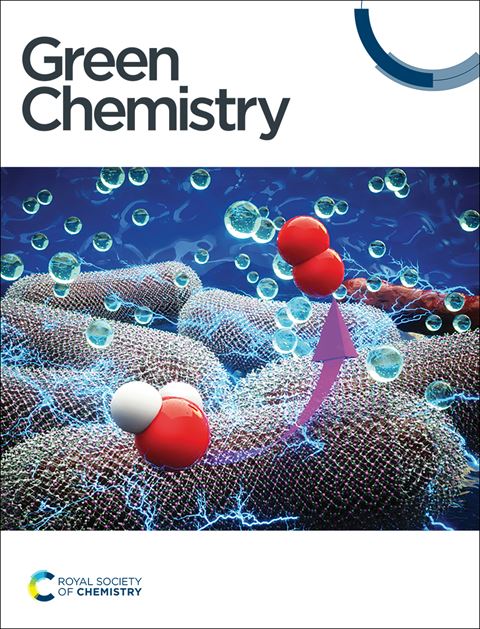Electrocatalytic C–C coupling of CO2 and formaldehyde to synthesize acetate via membrane electrode assembly†
IF 9.3
1区 化学
Q1 CHEMISTRY, MULTIDISCIPLINARY
引用次数: 0
Abstract
The electrocatalytic CO2 reaction with other gases to synthesize value-added products at high current densities is challenging due to the limited diffusion rate for low-solubility gases in aqueous electrolytes. To enhance the mass transfer process, herein, a membrane electrode assembly (MEA) electrolyzer is employed to achieve high-rate electrochemical C–C coupling of CO2 and gaseous formaldehyde. Based on the simultaneous gas-phase delivery of reactants to the catalytic surface, an acetate production rate of 654 mg L−1 h−1 is achieved at a current density over 150 mA cm−2 on a Cu-MOF coated Cu2O catalyst. In situ FT-IR, Raman spectroscopy, and in situ XAFS combined with DFT suggest that the energy barrier of C–C coupling between *CO and *CH2OH is significantly lowered due to the insertion of Cu-MOF, thus promoting the production of acetate. This work provides a novel strategy for electrochemical treatment of waste gas coupling to synthesize high-value products with potential industrial applications.
求助全文
约1分钟内获得全文
求助全文
来源期刊

Green Chemistry
化学-化学综合
CiteScore
16.10
自引率
7.10%
发文量
677
审稿时长
1.4 months
期刊介绍:
Green Chemistry is a journal that provides a unique forum for the publication of innovative research on the development of alternative green and sustainable technologies. The scope of Green Chemistry is based on the definition proposed by Anastas and Warner (Green Chemistry: Theory and Practice, P T Anastas and J C Warner, Oxford University Press, Oxford, 1998), which defines green chemistry as the utilisation of a set of principles that reduces or eliminates the use or generation of hazardous substances in the design, manufacture and application of chemical products. Green Chemistry aims to reduce the environmental impact of the chemical enterprise by developing a technology base that is inherently non-toxic to living things and the environment. The journal welcomes submissions on all aspects of research relating to this endeavor and publishes original and significant cutting-edge research that is likely to be of wide general appeal. For a work to be published, it must present a significant advance in green chemistry, including a comparison with existing methods and a demonstration of advantages over those methods.
 求助内容:
求助内容: 应助结果提醒方式:
应助结果提醒方式:


